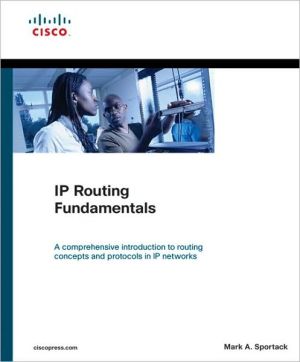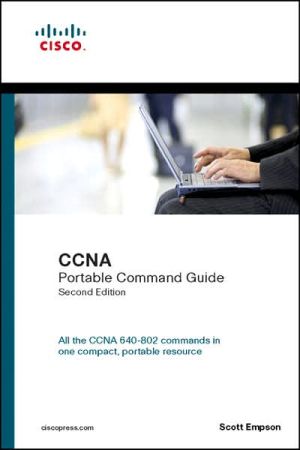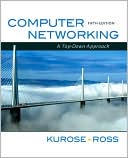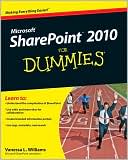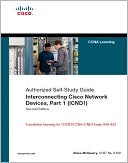IP Routing Fundamentals
A comprehensive ntroduction to routing concepts and protocols in IP networks.\ \ Comprehensive review of the operational mechanics of today's leading routing protocols, including IGRP, EIGRP, OSPF, RIP, and RIP-2\ Detailed explanation of IP addressing, including classful and classless addresses, subnetting, supernetting, Classless Interdomain Routing (CIDR), and Variable Length Subnet Masks (VLSM)\ Side-by-side comparisons of various LAN segmentation technologies, including bridges, switches,...
Search in google:
A comprehensive ntroduction to routing concepts and protocols in IP networks.Comprehensive review of the operational mechanics of today's leading routing protocols, including IGRP, EIGRP, OSPF, RIP, and RIP-2Detailed explanation of IP addressing, including classful and classless addresses, subnetting, supernetting, Classless Interdomain Routing (CIDR), and Variable Length Subnet Masks (VLSM)Side-by-side comparisons of various LAN segmentation technologies, including bridges, switches, and routersExploration of how routers are used to build wide area networksExamination of the future of routing, including IPv6, next generation routing protocols, host-based routing, and IP SwitchingIP Routing Fundamentals is the definitive introduction to routing in IP networks. This comprehensive guide explores the mechanics of routers, routing protocols, network interfaces, and operating systems.This reference provides essential background information for network professionals who are deploying and maintaining LANs and WANs, as well as IT managers who are seeking information on how evolving internetworking technology will affect future networks. Part I discusses the many roles routers play in networks, Part II talks about the inner working of routers, Part III works with the operational issues of routing protocols, and Part IV addresses implementation issues that provide practical insight, in addition to a discussion of the future of routing.
\ \ CHAPTER 4: Routers and WANs\ Routers are designed to interconnect multiple networks. This interconnection enables machines on different networks to communicate with each other. Interconnected networks can be colocated (as shown in Chapter 3, "Routers and LANs") or geographically dispersed. Networks that are geographically dispersed are usually interconnected via a wide-area network (WAN). WANs are constructed of numerous different technologies including routers, transmission facilities, and line drivers. It is the router's capability to interconnect networks in a WAN that has made it indispensable.\ This chapter begins with an overview of the physical components and logical functions of a router as well as the various specialized roles a router may have within a WAN. This chapter concludes with a look at some of the ways to measure the effectiveness of your WAN.\ A CLOSER LOOK AT ROUTERS\ A router is an intelligent network device that operates predominantly at the first three layers of the OSI reference model. Routers, like any host, are actually capable of operating at all seven layers of the OSI reference model. Depending on your particular configuration, you may or may not use all seven layers of functionality. However, the need for the first three layers is virtually universal. Communications across the first two layers allows routers to communicate directly with LANs (data link layer constructs). More importantly, routers can identify routes through networks based on Layer 3 addresses. This enables routers to internetwork multiple networks, regardless of how near or far they may be, by using network layer addressing.\ Understanding routers and routing requires examining a router from two different perspectives: physical and logical. From a physical perspective, routers contain myriad parts that each have a specific function. From a logical perspective, routers perform many functions including finding other routers in the network, learning about potential destination networks and hosts, discovering and tracking potential routes, as well as forwarding datagrams toward their specified destination. Together, these physical components and logical functions enable you to build and use internetworks, including WANs.\ Physical Components\ A router is a remarkably complex device. Its complexity lies in its routing engine-logic that enables the physical device to perform the various routing functions. The complexity of routing logic is hidden by the relative simplicity of the router's physical form. The most common type of router is actually a highly specialized type of computer; it contains the same basic components as any other computer. These include the following:\ \ A central processing unit (CPU)\ Random access memory (RAM)\ A basic input/output system (BIOS)\ An operating system (OS)\ A motherboard\ Physical input/output (I/O) ports\ A power supply, chassis, and sheet-metal skin\ \ The vast majority of a router's components will remain forever shielded from the eyes of network administrators by the chassis' sheet- metal skin. These components are extremely reliable and under normal operating conditions shouldn't see the light of day. The obvious exceptions to this general statement are borne of expansion. Any time you need to add more resources to the router, you will have to take its cover off. Such resources usually include either memory or I/O ports.\ The components that a network administrator will encounter most often are the operating system and the I/O ports. A router's operating system (in Cisco System's case the Internetwork Operating System - IOS) is the software that controls the various hardware components and makes them usable. Network administrators use a command-line interface to develop a logical configuration. The configuration is a profile of the system: the numbers, locations, types of each I/O port, and even details such as addressing and bandwidth information. A router's configuration can also include security information such as which users are permitted access to specific I/O ports and their transmission facilities.\ The I/O ports are the one physical router component that network administrators see on a routine basis. These are the tangible proofs of the router's unique capability to interconnect seemingly endless combinations of LAN and WAN transmission technologies. Each one of these, whether LAN or WAN, must have its own I/O port on the router. These ports function like a network interface card (NIC) in a LAN-attached computer; they define the medium and framing mechanisms expected and provide the appropriate physical interfaces. Many of these physical interfaces appear quite similar to each other. This physical similarity belies the differences between the higher-layer functions of those technologies. Therefore, it is more useful to examine transmission technologies than examine specific physical interfaces. Chapter 6, "Transmission Technologies," provides this coverage.\ Router Functions\ Equally important as providing physical interconnectivity for multiple networks are the logical functions a router performs. These functions make the physical interconnections usable. For example, internetworked communications requires that at least one physical path interconnect the source and destination machines. However, having and using a physical path are two very different things. Specifically, the source and destination machines must speak a common language (a routed protocol). It also helps if the routers that lie in between them also speak a common language (a routing protocol) and agree on which specific physical path is the best one to use.\ Therefore, some of the more salient functions that a router provides are:\ \ Physical interconnectivity\ Logical interconnectivity\ Route calculation and maintenance\ Security\ \ ...
I. INTERNETWORKING FUNDAMENTALS.1. An Introduction to Internetworking.2. Understanding Internetwork Addresses.3. Routers and LANs.4. Routers and WANs.II. THE INNER WORKINGS OF ROUTERS.5. Internet Protocols Versions.6. Transmission Technologies.7. The Mechanics of Routing Protocols.III. ROUTING PROTOCOLS.8. Routing Information Protocol.9. Routing Information Protocol Version 2.10. Interior Gateway Routing Protocol.11. Enhanced Interior Gateway Routing Protocol.12. Open Shortest Path First.IV. IMPLEMENTATION ISSUES.13. Building Internetworks.14. Internetworking with Dissimilar Protocols.15. The Future of Routing.Index.
